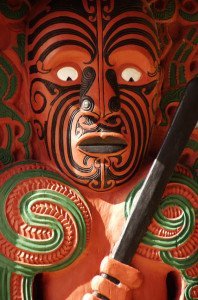 As New Zealand’s largest city Auckland has quite a different feel to it than Christchurch or Wellington, both of which seem to have retained a bit of small town charm about them as they’ve grown. Not that Auckland is unpleasant, or at least the bits of the city centre that we’ve seen anyway, but the place has a little bit of big city bustle about it that we’ve not experienced elsewhere in New Zealand. After five weeks of what’s been a very rural experience it feels ever so slightly frenetic., but perhaps that’s just a sign of a busy town and a healthy economy.
As New Zealand’s largest city Auckland has quite a different feel to it than Christchurch or Wellington, both of which seem to have retained a bit of small town charm about them as they’ve grown. Not that Auckland is unpleasant, or at least the bits of the city centre that we’ve seen anyway, but the place has a little bit of big city bustle about it that we’ve not experienced elsewhere in New Zealand. After five weeks of what’s been a very rural experience it feels ever so slightly frenetic., but perhaps that’s just a sign of a busy town and a healthy economy.
 That said, you can’t build a city on the edge of the Pacific Ocean without it taking on a maritime character and Auckland has done that very successfully. We spent a couple of very pleasant hours this afternoon walking through the harbour area and ogling some of the significant nautical hardware moored alongside. I’ve avoided calling them yachts because these titanic (!) vessels are about as far away from my experience of yachting as you can get. No doubt a helicopter is an absolutely essential accessory if you own something that’s the size of village and cost rather more than the GNP of a small country – jealous, me, surely not?
That said, you can’t build a city on the edge of the Pacific Ocean without it taking on a maritime character and Auckland has done that very successfully. We spent a couple of very pleasant hours this afternoon walking through the harbour area and ogling some of the significant nautical hardware moored alongside. I’ve avoided calling them yachts because these titanic (!) vessels are about as far away from my experience of yachting as you can get. No doubt a helicopter is an absolutely essential accessory if you own something that’s the size of village and cost rather more than the GNP of a small country – jealous, me, surely not?
This morning we met with Ed Verner , a chum of sons Richard and Thomas, who made the move to Auckland around three years ago and is now prospering here as a professional chef. It was great to hear how well he and his partner Laura are doing and to hear something about their plans for the future. Good luck Ed, and thanks for finding the time to meet up.


























